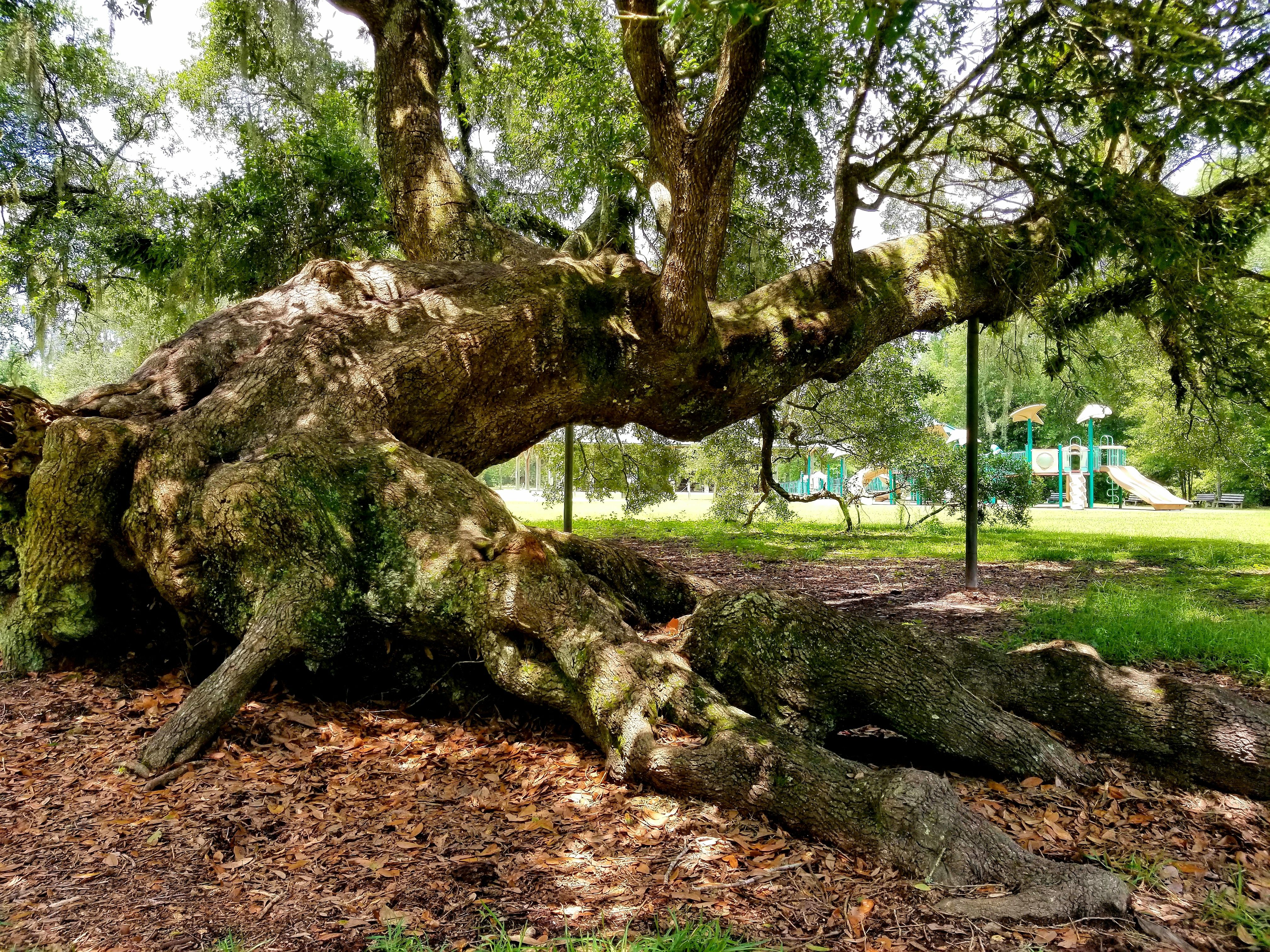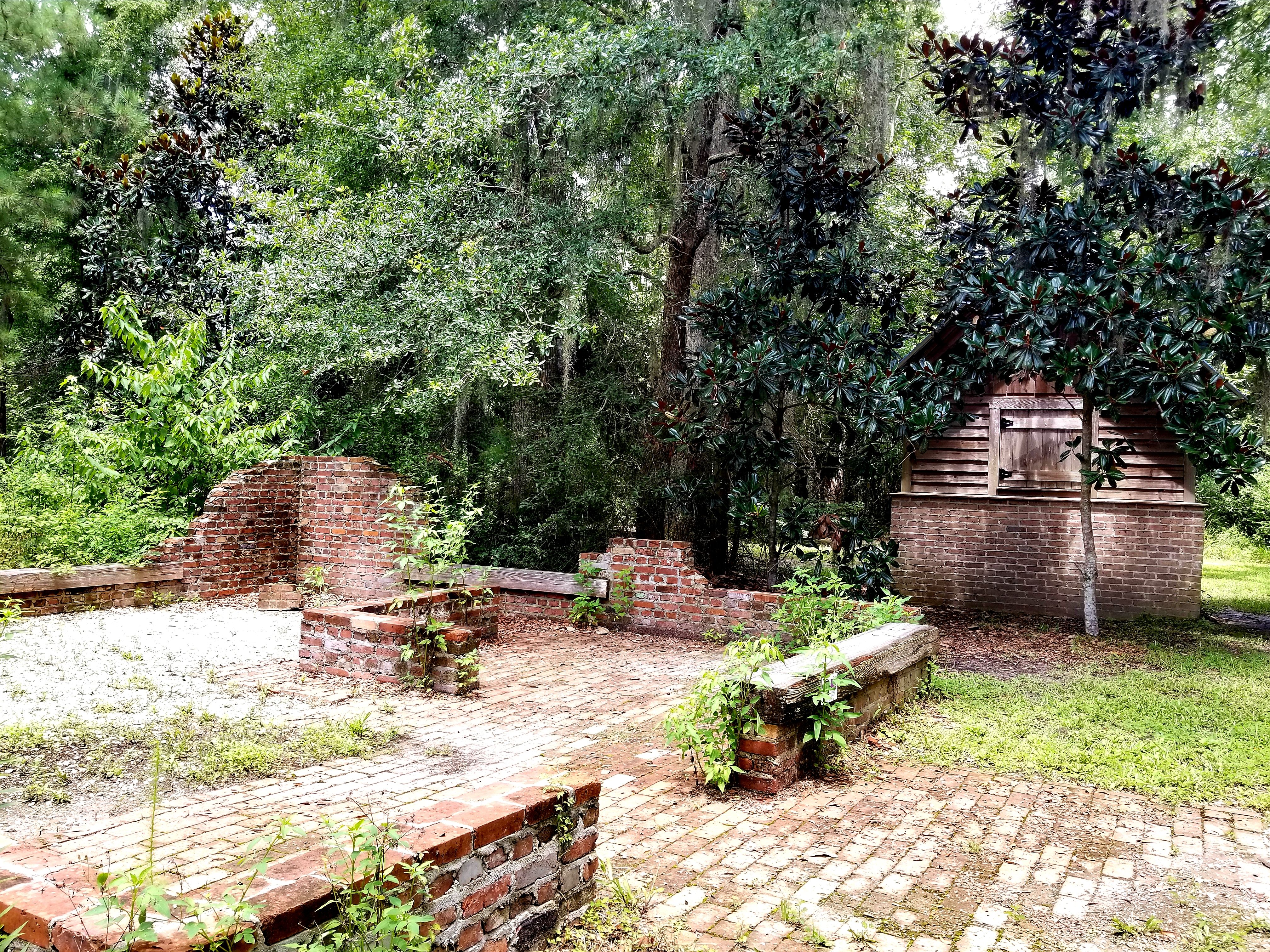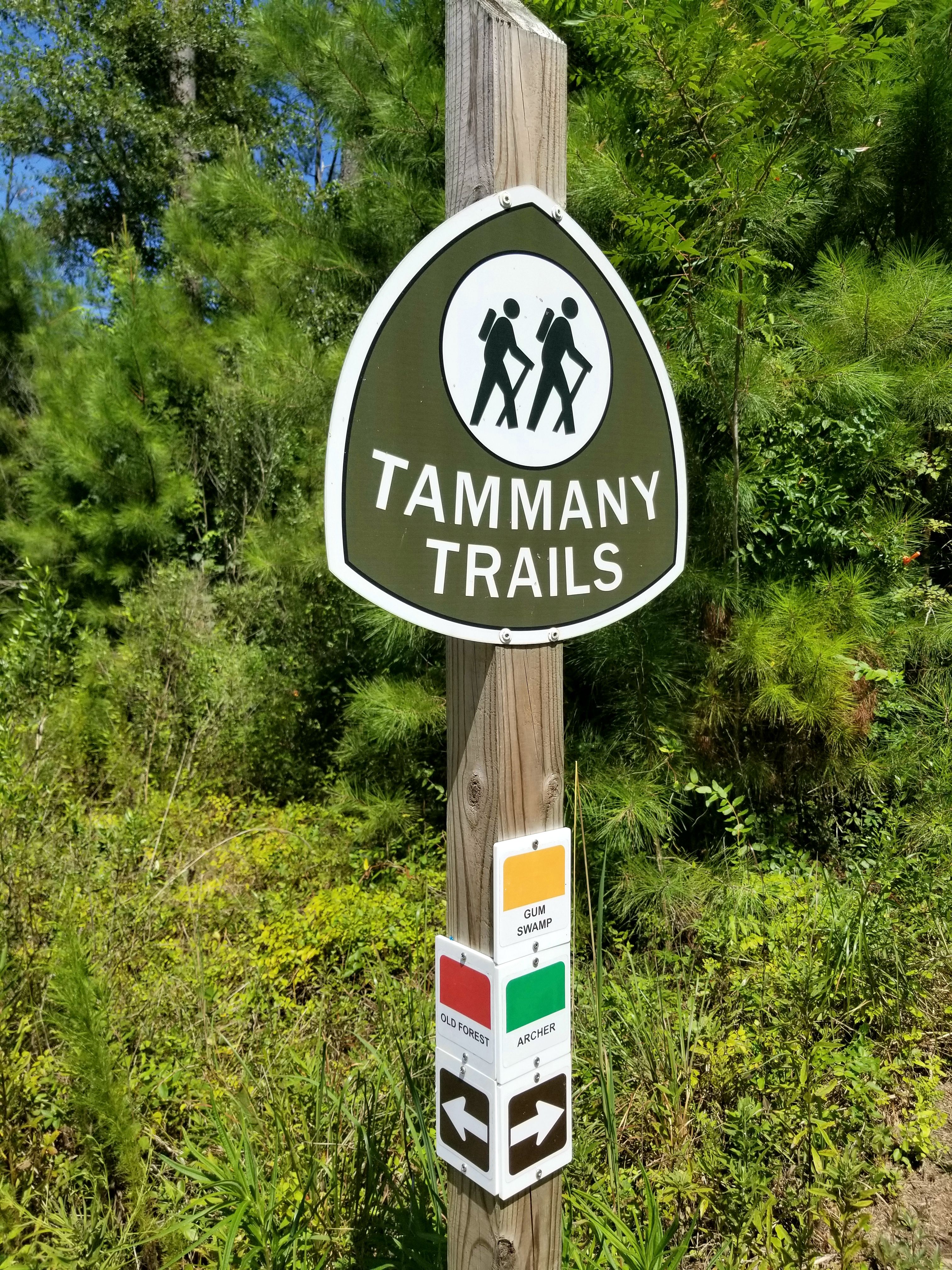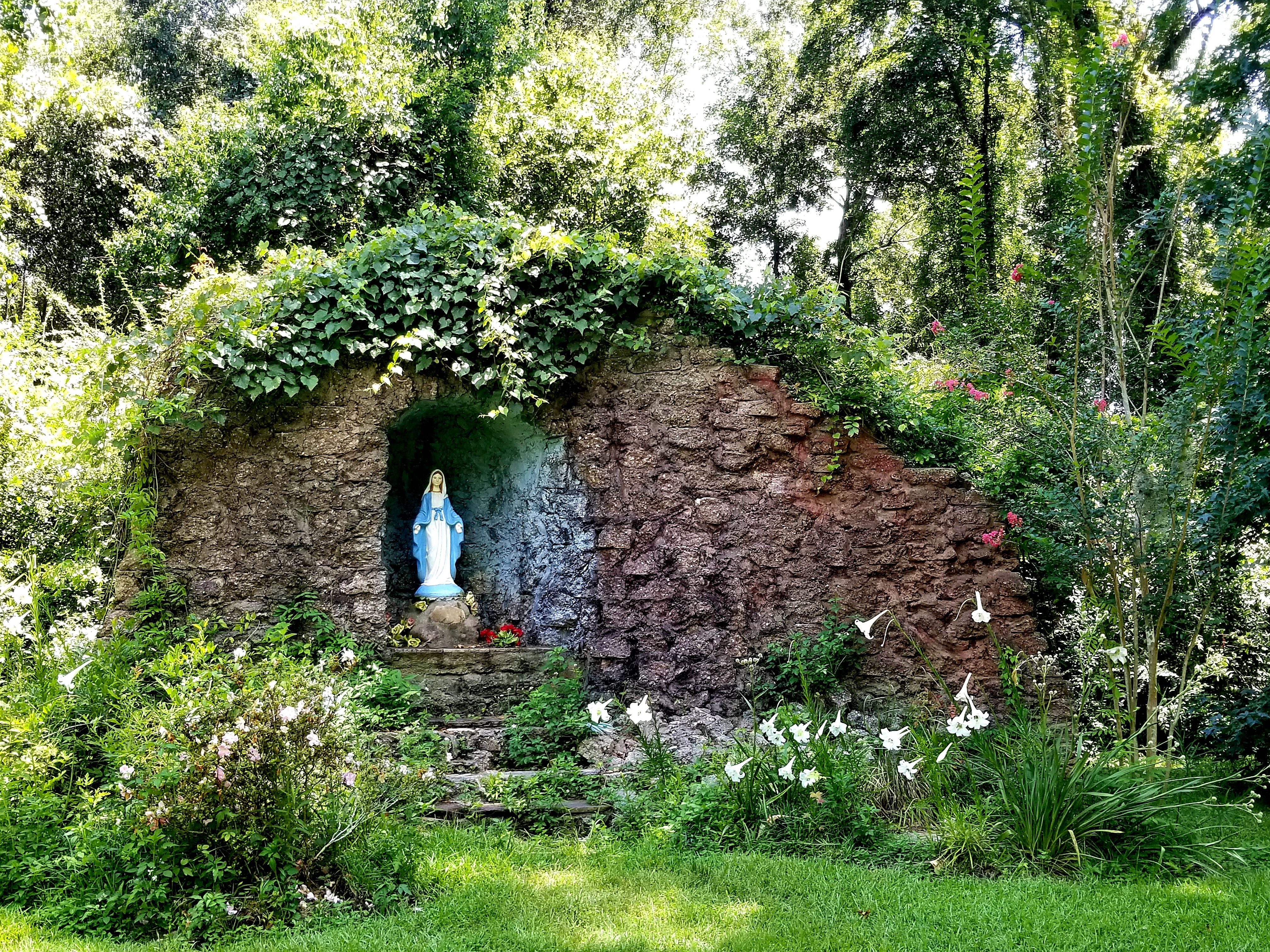It's September in New
Orleans, and we're all breathing a sigh of relief as the temperature dips and
the mosquito population wanes. Many are hearing the call of the Great Outdoors.
Couturie Forest in City Park is a pleasant walk in the woods, and the bike path
down Wisner Boulevard is breezy and shady—but maybe you've been down those
routes, walked or pedaled in circles there before. Maybe you're looking for
something quieter, for more biodiversity. Maybe you even want to add history
and culture into the mix. If so, then we have a sweet surprise for you.

Camp Salmen Nature Park
is conveniently located in Slidell, 15 minutes off of I-10, on Gause Boulevard.
Don't follow Google's directions, which will lead you to the old Boy Scout
Entrance; instead, turn left into the park when you see the wooden entrance
sign—an artifact, reminiscent of your camp-film favorites. The setting of Camp
Salmen is, in fact, a blast from the past—way, way back. The park has preserved relics of the 60
years that it hosted Boy Scouts, who came to earn rare merit badges (think bugling,
canoeing, archery, astronomy, and lifesaving), but the park also aims to
preserve a place with ancient cultural roots.
The Camp Salmen Lodge, constructed before 1830, was recently listed as one of Louisiana's Most Endangered Places for 2020, by the Louisiana Trust for Historic Preservation, who claim Joseph Laurent had the financial means to build the cottage. Laurent selected a location at the shore of a backwater pool in Bayou Liberty deep enough to turn boats around—boats that brought bricks, made from the clay pits there, back to rebuild the largest portion of the French Quarter after it burned. However, the grounds at Camp Salmen were, first and foremost, an indigenous trading post—the Northshore's equivalent of the trading post that is today the French Market on the Mississippi River.
Preservation at Camp Salmen is not limited to rare architectural treasures and cultural/historical landmarks, but to environmental preservation as well. Miles of hiking trails traverse multiple microbiomes, representative of the total scope of our Southeastern Louisiana landscape, and offer several different kinds of nature experiences for folks looking to get lost in the woods for a while. If your aim is a relaxing day, hidden under the canopy, or an easy walk along the bayou's shore, start at the primary entry point to the Camp Ridge Trail, located by the pavilion (and playground, which may be closed due to COVID-19).

The Camp Ridge trail offers a canoe launch, boardwalks through cypress swamps and lowlands, and opportunities to go safely "off-road," where you'll discover "Sioux Ruins" (of the defunct Boy Scout camp), the Camp Salmen Live Oak (on the Live Oak Society Registry), an amphitheater (formerly the brick clay pit), and the Salmen Lodge (aka the "original" Creole trading post). Look for ancient edible and medicinal plants, such as pennywort, blackberry, green briar, and water plantains, among other natives, including royal fern, St. Peter's wort, and flowering lizard tail and pickerel weed. Pack a picnic lunch and get cozy in one of the several shady or sunny spots tucked away on these short trails.

Enjoy cycling? The St.
Tammany Trace/Bike Trail is accessible from within Camp Salmen. You might
choose to add to your itinerary a leisurely ride on the loop in the park,
through open and wooded lands and over Goldfish Bayou. A moderate cyclist can
head west on the Trace and pedal just under 15 miles to Fontainebleau State
Park, with its beautiful beach and sugar mill ruins, before returning to Camp
Salmen. A serious cyclist might be stoked to make the 50-mile round trip to
Abita Springs and back, with a stop, perhaps, at the Abita Brew Pub or Mama D's
Pizza for lunch.
However, if what you need
is full immersion in the Louisiana wilds, plan for a whole day of exploring the
wandering trail system at Camp Salmen. As you drive to the parking lot and
trailhead located by the pavilion and playground, you'll notice the "grotto," remnants
of the Boy Scout camp's Catholic chapel, within which perches a pristine statue
of the Mother Mary surrounded by a lush proliferation of kaleidoscopic flowers.
The grotto marks the intersection of the Camp Salmen trail system. At the
grotto, cross the parkway to access Camp Salmen's three longer trails: the
Goldfish Bayou Basin, Flatwoods Crescent, and Old Fields Plateau trails.

Goldfish Bayou Basin is the closest and shortest loop, circling and crossing through Gum Swamp and connecting with both the Old Fields Plateau and Flatwoods trails. You'll want to bring insect repellant for this leg of the trip—though ticks and biting flies are not an issue here during warmer weather, like they are at Fontainebleau. Look out for golden orb weavers. You could skip the swamp and follow the Flatwoods Crescent trail along its perimeter before diving deeper into the park's hardwood forest, where you might see a rabbit or three, and then into the meadows of the Old Fields Plateau trail, where wildflower blooms peak during the fall.
Whether you want a
peaceful escape or wildlife adventure, Camp Salmen Nature Park is open from 9
a.m. - 4:30 p.m., Friday - Sunday, to fulfill your every outdoor desire. Admission
is free, so download a trail map (campsalmennaturepark.org/files/CSTrailmap10_2011.gif);
strap on your hiking shoes or rack up your bike or kayak; pack lots of water, snacks,
sunscreen, and bug spray; and hit the road.

